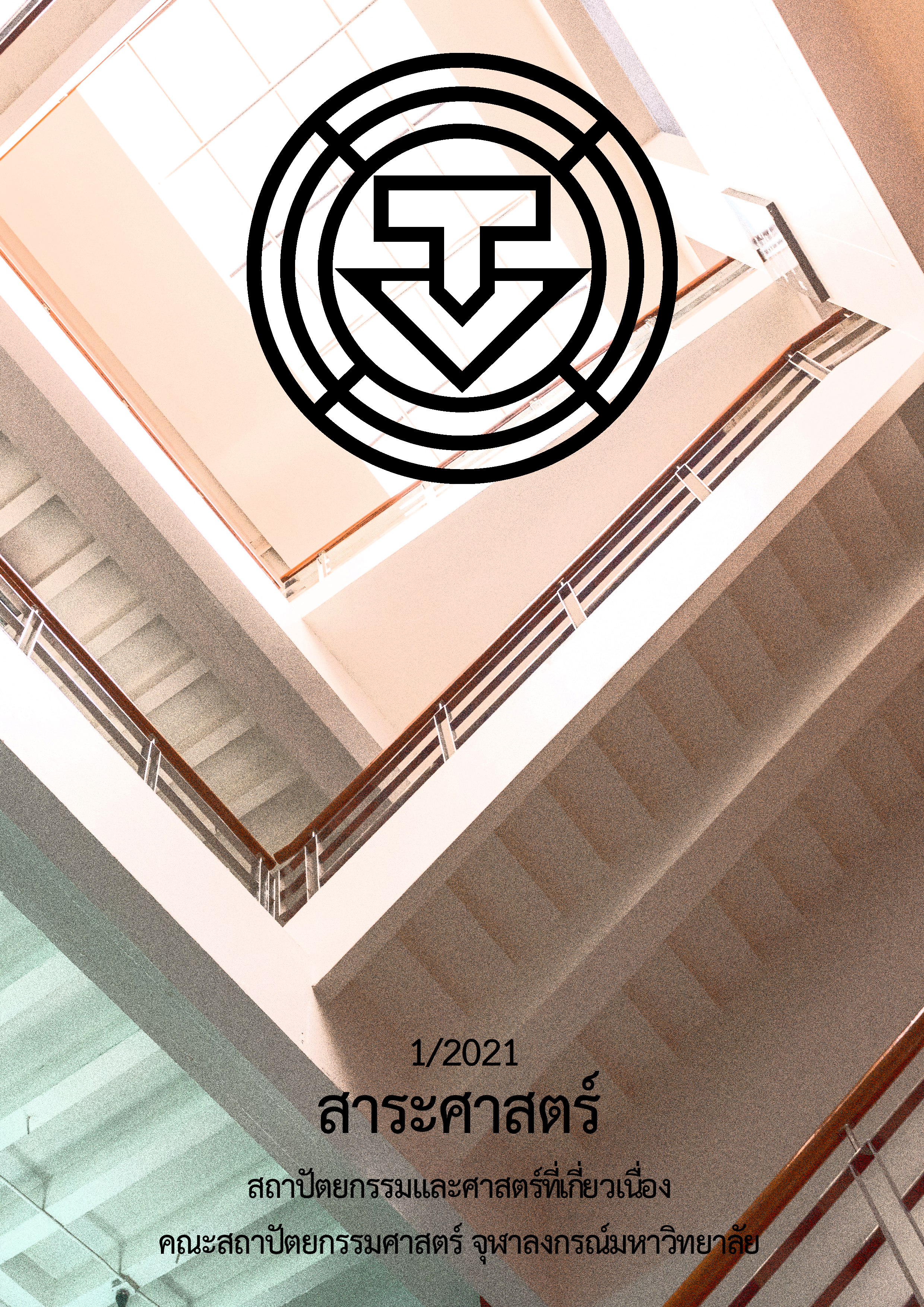แนวทางการจัดทำกระบวนการบริหารจัดการเขตอนุรักษ์มรดกทางวัฒนธรรม (สถาปัตยกรรม) เพื่อส่งเสริมการท่องเที่ยวเมืองเก่าลำพูน แพร่ น่าน
Main Article Content
บทคัดย่อ
โครงการวิจัยเรื่องแนวทางการจัดทำโครงสร้างและกระบวนการบริหารจัดการเขตอนุรักษ์มรดกทางวัฒนธรรม (สถาปัตยกรรม) เพื่อส่งเสริมการท่องเที่ยวเมืองเก่าลำพูน แพร่ น่าน มีวัตถุประสงค์เพื่อ 1) เพื่อเสนอต้นแบบลักษณะโครงสร้างองค์กรที่ดำเนินงานบริหารจัดการเขตอนุรักษ์มรดกทางวัฒนธรรม (สถาปัตยกรรม) 2) เพื่อเสนอต้นแบบขั้นตอน และกระบวนการบริหารจัดการเขตอนุรักษ์มรดกทางวัฒนธรรม (สถาปัตยกรรม) การศึกษาครั้งนี้ดำเนินการภายในพื้นที่เขตเมืองเก่าจังหวัดแพร่ น่าน และลำพูน โดยเป็นการวิจัยเชิงปฏิบัติการที่มุ่งเน้นการพัฒนาต้นแบบด้วยการบูรณาการข้อมูลโครงสร้างและกระบวนการการบริหารจัดการแหล่งท่องเที่ยวที่เป็นชุมชนดั้งเดิม ร่วมกับการรับฟังความคิดเห็นของชุมชนดั้งเดิมภายใต้เงื่อนไขของกฎหมายในปัจจุบัน จากการศึกษาพบว่าในปัจจุบันยังไม่มีกฎหมายหรือข้อกำหนดที่เกี่ยวข้องกับการจัดทำเขตอนุรักษ์มรดกทางวัฒนธรรม (สถาปัตยกรรม) ภายในเมืองเก่าหรือชุมชนดั้งเดิม โดยการบริหารจัดการส่วนใหญ่ต้องอาศัยกฎหมายหรือข้อกำหนดอื่น ๆ ที่มีความเกี่ยวข้อง ทั้งนี้ เพื่อให้สามารถบริหารงานได้อย่างชัดเจนและต่อเนื่องจึงมีความจำเป็นต้องจัดตั้งองค์กรส่วนกลางขึ้นเพื่อประสานงานระหว่างหน่วยงานและชุมชน โดยสามารถดำเนินการจัดตั้งองค์กรได้ 3 รูปแบบ ได้แก่ 1) การใช้องค์กรหน่วยงานราชการส่วนท้องถิ่นเดิมที่มีอยู่แต่บูรณาการแผนการทำงานหรือเพิ่มกลุ่มการทำงานใหม่เข้าไป 2) การใช้องค์กรชุมชนประสานการทำงาน 3) การจัดตั้งองค์กรขึ้นใหม่ในรูปแบบเอกชนที่มีการกำหนดวัตถุประสงค์เฉพาะด้าน องค์กรที่จัดทำควรประกอบด้วยตัวแทนจากหน่วยงานภาครัฐ ภาคธุรกิจ ภาคการศึกษา และภาคประชาชน ขั้นตอนและกระบวนการบริหารจัดการเขตอนุรักษ์มรดกทางวัฒนธรรม (สถาปัตยกรรม) สามารถแบ่งได้เป็น 2 ส่วนคือ 1) กระบวนการจัดทำเขตอนุรักษ์มรดกทางวัฒนธรรม (สถาปัตยกรรม) และ 2) กระบวนการบริหารจัดการการท่องเที่ยวภายในเขตอนุรักษ์มรดกทางวัฒนธรรม (สถาปัตยกรรม) อย่างไรก็ตาม หน่วยงานการปกครองส่วนท้องถิ่นและชุมชนควรจัดตั้งองค์กรดังกล่าว และดำเนินกิจกรรมตามแนวทางฯ ตามศักยภาพและจุดแข็งของแต่ละจังหวัดที่มีความแตกต่างกัน
Article Details
เอกสารอ้างอิง
กรมการท่องเที่ยว. [ม.ป.ป.]. แนวทางการบริหารจัดการแหล่งท่องเที่ยวเชิงนิเวศ ทางประวัติศาสตร์ทางวัฒนธรรม. กรุงเทพฯ: กรมการท่องเที่ยว.
กรมการท่องเที่ยว และ ศูนย์ศึกษาการบริหารทรัพยากรกายภาพ คณะสถาปัตยกรรมศาสตร์จุฬาลงกรณ์มหาวิทยาลัย. (2556). คู่มือการจัดการแหล่งท่องเที่ยว: สิ่งอำนวยความสะดวกและองค์ประกอบทางกายภาพ. กรุงเทพฯ: โรงพิมพ์จุฬาลงกรณ์มหาวิทยาลัย.
กาญจนา แสงลิ้มสุวรรณ และ ศรัณยา แสงลิ้มสุวรรณ. (2555). การท่องเที่ยวเชิงมรดกวัฒนธรรมอย่างยั่งยืน. วารสารนักบริหาร, 32, 139-146.
ฉันทัช วรรณถนอม. (2552). อุตสาหกรรมการท่องเที่ยว. กรุงเทพฯ: สามลดา.
Doruetai Kovathanakul. (2550). The comparative of cultural heritage management of Nan city and Luang Prabang : Sustainable tourism perspective. ใน รัศมี รัตนไชยานนท์, บรรณาธิการ. การอนุรักษ์และพัฒนามรดกวัฒนธรรมท้องถิ่นอย่างยั่งยืนในแนวทางบูรณาการข้ามศาสตร์. กรุงเทพฯ: อมรินทร์พริ้นติ้งแอนด์พับลิชชิ่ง.
ธนิก เลิศชาญฤทธิ์. (2554). การจัดการทรัพยากรวัฒนธรรม. กรุงเทพฯ: ศูนย์มานุษยวิทยาสิรินธร (องค์การ มหาชน).
ปิ่นรัชฎ์ กาญจนัษฐิติ. (2552). การอนุรักษ์มรดกสถาปัตยกรรมและชุมชน. กรุงเทพฯ: โรงพิมพ์จุฬาลงกรณ์มหาวิทยาลัย.
อีโคโมสไทย. (2557). กฎบัตรประเทศไทยว่าด้วยการบริหารจัดการแหล่งมรดกวัฒนธรรม. จุลสารอิโคโมสไทย, 26-27, 3.
Orbasli, Aylin. (2000). Tourists in historic towns: Urban conservation and heritage management. London: E & FN Spon.
The United Nations Educational, Scientific and Cultural Organization. (2013). Resource manual: Managing cultural world heritage. Paris: Fontenoy.


